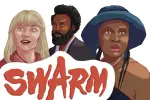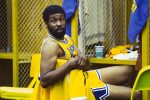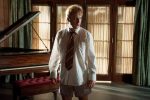Professions that serve the public, like law enforcement and medicine, are generally perceived positively in the United States. Or at least, they make for good television shows. The firefighter drama series “9-1-1: Lone Star” is no exception.
The show isn’t too different from the multitude of other television series about surgeons and police departments. In fact, “9-1-1: Lone Star” is a spinoff of the existing “9-1-1” starring first responders in Los Angeles. The Lone Star version, however, follows a fire department in Austin, Texas, as they respond to different emergencies. The show features Robe Lowe from “Parks and Recreation” as the protagonist. Lowe, who plays Owen Strand, moves from New York City to Austin with his son, TK Strand, to oversee the rebuilding of Fire Department 126 after its former members die in an explosion.
“9-1-1: Lone Star” was released in January 2020, and it was renewed for a second season in April due to its positive reception. Nevertheless, while I agree that the show had elements that contributed toward its success, the predictable arcs of each episode undermine it a bit.
One of the qualities that makes shows stand out is how true-to-life they feel. “9-1-1: Lone Star” evokes this quality by inserting popular cultural references, especially in its pilot episode. With hyper-specific calls to “Birdbox” and Lil Nas X’s “Old Town Road,” these details are small, but effectively make the show feel more realistic by placing it within 2018 and 2019, the years that those two bits of media were released.
However, a major hit to the show’s realism is the portrayal of the firefighter rescue scenes. They just are not entirely believable. While the emergencies within each episode are creative and encompass more than your typical call to a fire in a residential home, some of the events in this show are a bit absurd. In one episode, a tornado picks up a woman’s Prius and wedges it midair, upside down, in an alley nearby. Combined with the obvious computer-generated imagery (CGI) in some moments, the show occasionally falls flat.
In film, extreme premises are often opportunities for character development. They’re chances to show the relationships and struggles between different cast members — in this case the crew of Fire Department 126 — but that doesn’t really happen here.
Often, I don’t particularly like watching the conflicts in shows because they create tension. However, leaving out conflicts in the firefighter rescue scenes makes them seem like an afterthought, either because of how unrealistic they are, or because the show resolves them so quickly that it becomes predictable.
With less time on the 911 calls and response, the show dedicates more screen time to the larger story arc. TK, for example, struggles with an opioid addiction, and the creators of the show do an excellent job at exploring his development. The same can be said for Michelle Blake, paramedic captain and close partner to the 126, who spends the entirety of Season 1 searching for her missing sister, Iris.
On the more light-hearted side, if you have seen Lowe as Chris Traeger, the show’s similarity to “Parks and Recreation” is uncanny. Obvious just a few episodes into the show, both Owen Strand and Chris Traeger have an interesting obsession with physical fitness, body positivity and the way they present themselves.
If you remember that one episode in “Parks and Recreation” when Chris was accused of cheating because he had a women’s razor in the shower, you’ll know that the reason turned out to be that women’s razors create a smoother shave. As someone who ran marathons, Chris had to be refined.
Owen Strand, on the other hand, takes a lot of care in how he drinks his coffee and styles his hair. Altogether, these details are minute, but they’re realistic. Most of us have our own specific set of interests, and for Lowe’s two personas, that’s physical health. It almost feels like the producers of “9-1-1: Lone Star” chose to capitalize on Lowe’s most prominent role.
Yet, the show’s strongest point is not its realism, but its casting. The Austin Fire Department includes among its crew a trans man, a gay man, a woman and a Dreamer. For most of these characters, they have the casting to back it up as well, which is super refreshing to see. Specifically, it’s really inspiring to watch how the show portrays LGBTQ+ perspectives with TK and his eventual romantic interest, Officer Carlos Reyes.
LGBTQ+ representation has made headways in the film industry with prominent movies like “Moonlight” and “Love, Simon.” However, many of these films focus on the coming-of-age, and subsequently, the coming-out story.
Especially for young adults, the show’s rejection of this common cliche helps normalize being openly gay. “9-1-1: Lone Star” shows that being gay doesn’t need an accompanying explanation or exciting moment; it’s the same as everyone else. While the show might not perfectly represent fire departments across the country, it certainly does have a cast that accurately reflects who its viewers are.
If you’re a sucker for gay romantic developments or Rob Lowe, then it’ll be very easy — almost too easy — to watch “9-1-1: Lone Star” and skip to just the parts that focus on them. If you’re up to date on popular culture, you’ll likely notice the many references that the cast makes. And if you’re from Texas, you’re bound to connect with the show and its stereotypical depiction of the rodeo and cowboy hats. But regardless, the show’s diverse casting makes it easy for all viewers to find a character whose story resonates with them.

















